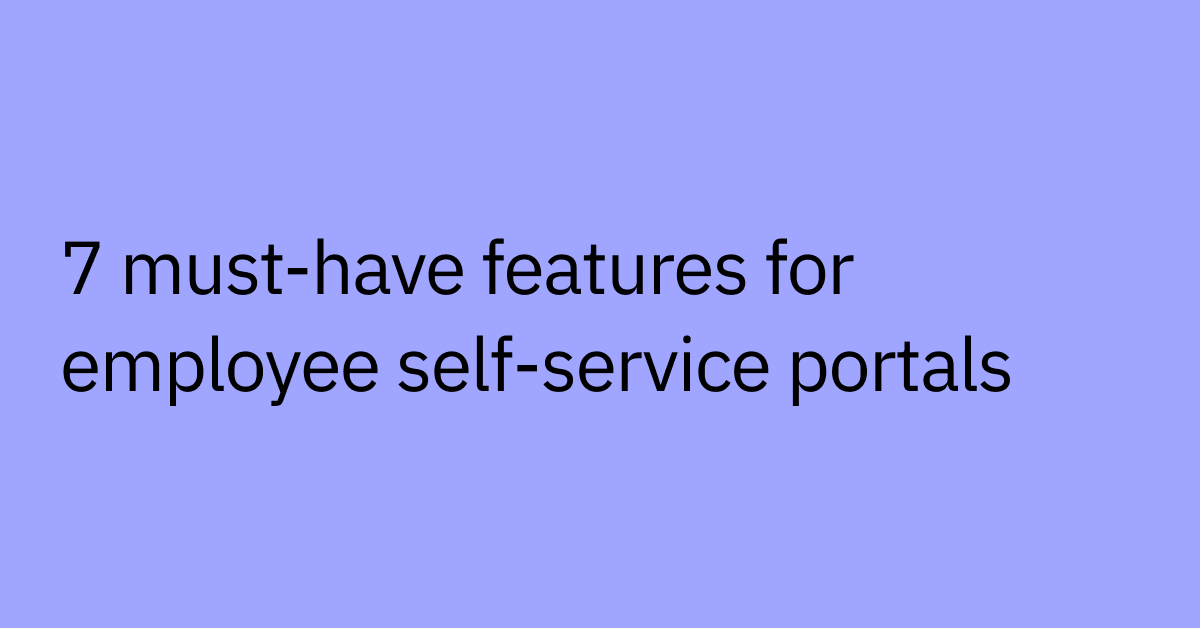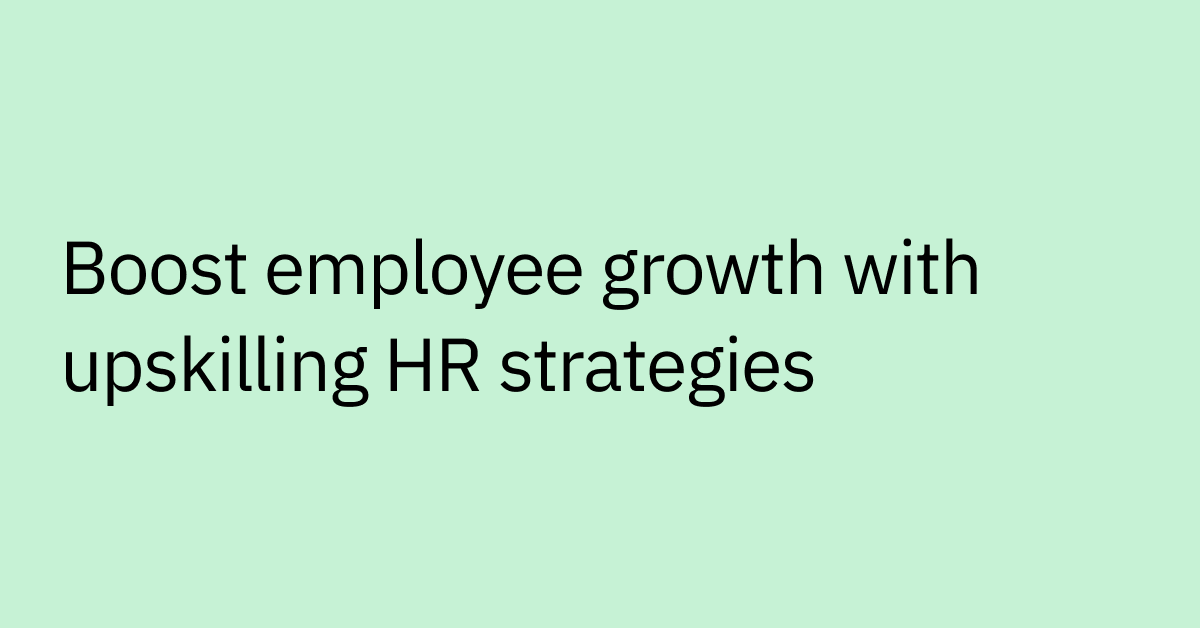Table of contents
Highlights
- IT leaders face pressure to reduce costs while maintaining or improving service levels, a challenge compounded by rising infrastructure, software, and support demands.
- Effective IT cost reduction goes beyond simple budget cuts, focusing on optimization through automation, consolidation, and intelligent resource management to drive business value.
- Key challenges in managing IT costs include rapid technological change, increasing data and security demands, misaligned IT spending with business goals, organizational silos, and difficulties in budgeting and cost tracking.
- Initial strategies for cost reduction should prioritize efficiency and automation, such as automating repetitive IT support tasks and user provisioning/deprovisioning, and deploying AI-powered employee self-service.
- Further optimization involves minimizing cloud infrastructure waste (which Flexera’s 2025 State of the Cloud Report estimates is about 27% of cloud spend) and meticulously optimizing SaaS spend (reclaiming unused licenses, consolidating overlaps).
- Long-term strategic measures include consolidating redundant tools, standardizing IT processes, investing in predictive IT analytics to prevent issues, and improving vendor management and negotiation.
Gartner projects a nearly 10% increase in global IT spending this year. Now picture opening next quarter’s budget and seeing your spend ballooning 20%, between rising infrastructure costs, expanding software licensing fees, and growing support demand.
Cutting 10% overnight (without breaking service quality, team morale, or your systems) feels impossible. Yet doing nothing means overspend and risk. This is the reality IT leaders face in 2025.
There is a smarter way forward, though. Instead of choosing between either cost reduction or service quality, you need strategies that can deliver both. IT cost optimization focuses on maintaining quality while working more efficiently through automation, consolidation, and intelligent resource management.
And the goal here isn't just to spend less, either. You ultimately want to drive real business value by spending smarter and empowering your team to focus on strategic initiatives that help you meet your business needs.
Why is it so challenging to manage IT costs?
Managing IT costs feels harder than ever, and there are plenty of reasons why efforts to control IT costs typically stall, including:
- Overemphasis on point solutions
Many IT leaders chase savings by adopting isolated tools—search solutions, automation bots, or copilots built for one department. These reduce costs in silos but don’t address the bigger picture of fragmented workflows, duplicate tools, and employee friction. The result: costs shift rather than shrink.
- Complexity of integrations
A recurring hurdle is the difficulty of getting all systems—ERP, HRIS, ITSM, custom APIs—to work together. Without seamless integrations, cost optimization initiatives stall, since real savings require automation that cuts across boundaries.
- Hidden costs of scaling support
Traditional cost management assumes scaling people alongside demand. But as companies grow, support requests balloon, forcing IT to hire more staff. Without automation, that linear cost growth continues unchecked.
- Failure to align with business outcomes
Efforts often focus on short-term budget cuts instead of long-term business transformation. IT leaders want measurable outcomes—faster resolution times, higher employee satisfaction, lower attrition—not just line-item savings.
In short: IT cost management fails when it looks like penny-pinching – siloed efforts, limited integrations, and solutions delivered without considering employee experience or adoption. It succeeds when it’s tied to automation, integration, and employee experience—because that’s what prevents costs from creeping back in.
Top IT cost reduction strategies
A successful cost-control strategy typically includes:
- Budget planning
- Stakeholder communication
- Spend tracking
- Budget alignment with expenses
- Corrective actions to address financial shortcomings like overspending
The strategies below are structured to help you move from immediate, tactical improvements to more strategic, forward-thinking initiatives. This way, you address your most important operational inefficiencies and then build on those improvements with more nuanced, strategic enhancements.
Improve efficiency with automation
This initial phase helps you hone in on the improvements that deliver quick wins through operational efficiency gains and automation.
1. Automate repetitive IT support tasks
Everyday Level 1 tickets drain your support staff's time and impact your IT budget more than you might realize. Think about how much time your team spends on:
- Password resets and account lockouts
- Software installation requests
- VPN setup and troubleshooting
- Basic system access issues
- Routine hardware troubleshooting
AI-powered automation can help resolve many of these tasks instantly and at scale. An AI assistant can help employees skip the ticket queue—understanding requests and taking action automatically—right inside conversational interfaces like web browsers, Slack or Microsoft Teams. For a large enterprise handling thousands of password reset requests monthly, this type of automation could save hundreds of hours and significantly reduce support costs.
Download our CIO guide to smarter IT cost optimization.
2. Automate user provisioning and deprovisioning
Manual user account setup and removal are both time-consuming and error-prone. When someone joins your organization, IT teams often spend hours configuring access across multiple systems. When they leave, deprovisioning delays create security risks.
Automating onboarding and offboarding processes help reduce IT workload while improving security. Automated systems make sure that new hires get the right access on day one, while former employees lose access as soon as their employment ends. This translates to measurable cost savings through reduced manual hours and fewer compliance issues.
3. Deploy AI-powered employee self-service
"Shoulder tap" IT support (when employees interrupt their colleagues in IT for quick help) might seem harmless, but it can have expensive consequences. Every interruption breaks focus and divides attention between strategic work and routine questions.
Long ticket queues add to the problem. Employees may have to wait days for simple answers, while support teams get overwhelmed with repetitive requests.
Self-service solutions like AI assistants can help deflect tickets and minimize shoulder taps by giving employees instant answers to common questions. When someone asks something like "What's the PTO policy?" or "How do I set up my laptop?" an automated assistant can provide immediate, accurate responses without creating additional work for your team.
Learn more about how AI can deliver true employee self-service support.
Resource optimization
Automation gets you started, but it won’t carry you across the finish line. The next phase demands resource optimization—tightening the screws on spend, licenses, and infrastructure to drive real efficiency.
4. Minimize cloud infrastructure waste
Cloud sprawl and underused resources can inflate costs quickly. Common waste sources include:
- Virtual machines running 24/7 when they're only needed during business hours
- Over-provisioned storage that never gets fully utilized
- Redundant backup systems across multiple regions
- Development environments left running long after projects end
Auto-scaling, shutting down idle resources, and cost monitoring tools can help control spending. Specialized tools like Spot or Kubecost track usage patterns and set up alerts for abnormal consumption.
AI-driven monitoring takes this further by automatically flagging waste and suggesting optimizations based on actual usage patterns.
5. Optimize software licenses and subscriptions
Businesses often waste significant budget on unused or underutilized software licenses—over $18 million in 2023 alone. Regular audits help track actual usage so you can reallocate or cancel unneeded licenses.
Start by reviewing:
- Applications employees actually use daily, versus those that could be eliminated?
- Licenses purchased but never activated
- Overlapping functionality across different tools
- Seasonal usage patterns that might allow for flexible licensing
AI-powered automated license management tools can help simplify this process by continuously monitoring usage and suggesting optimizations, including potential opportunities to reduce costs or negotiate pricing.
Tool and process consolidation
Too many tools. Too many processes. This phase tackles the sprawl head on by consolidating systems and tightening workflows.
6. Consolidate redundant tools
Enterprises often pay for overlapping help desk, ticketing, monitoring, and collaboration tools. Each additional platform means separate licensing costs, training requirements, and maintenance overhead.
Consolidating platforms can be a great way to reduce licensing costs and simplify support. Audit your tech stack by asking:
- Where do tools overlap in functionality?
- Which platforms deliver the highest ROI?
- How much time does your team spend managing multiple similar tools?
Integrated AI platforms have the potential to streamline operations by replacing multiple point solutions, effectively lowering licensing costs and reducing operational complexity.
7. Standardize and streamline IT processes
Conflicting processes waste time and money. When different teams handle similar requests in different ways, you lose efficiency and create confusion.
Standardized processes reduce inefficiencies and cut costs by:
- Eliminating duplicate work across teams
- Reducing training time for new staff
- Improving consistency in service delivery
- Making it easier to identify optimization opportunities
Workflow automation helps you enable and enforce consistent processes, delivering benefits like:
- Faster issue resolution times
- Lower per-ticket support costs
- Reduced manual errors
- Better resource allocation
Strategic and predictive measures
The final phase focuses on your long-term strategic improvements and predictive capabilities.
8. Invest in predictive IT analytics
Surprise system outages and performance issues lead to expensive cost overruns, and reactive support can be more expensive than proactive maintenance. Predictive analytics can help IT teams spot and address problems before they lead to downtime. Use analytics to track metrics like:
- Mean time to resolution (MTTR)
- Ticket volume trends
- Cost per ticket across different categories
- System performance patterns
Benchmark these metrics against industry standards to identify additional savings opportunities.
AI-powered monitoring works particularly well for identifying and addressing issues before a disruption happens, often resolving problems automatically with minimal human intervention and/or downtime.
9. Improve vendor management and negotiation
Poor contract visibility and weak vendor oversight can also contribute to overspending. Many organizations renew contracts automatically without evaluating performance, exploring alternatives, or even checking to see whether the tool is actually used.
Strategies for better outsourcing and vendor management include:
- Regular vendor audits to assess performance and value
- Consolidating contracts to increase negotiating power
- Renegotiating terms based on actual usage data
- Bringing certain functions in-house when it's more cost effective
Focus on automating Level 0 and Level 1 tickets to reduce managed service provider (MSP) spending. When you can handle routine requests internally through automation, you’ll naturally reduce your reliance on external support while maintaining service quality.
Automation and AI can help with this initiative by tracking contract renewals and usage data, potentially giving you even stronger bargaining power in negotiations.
Enable sustainable cost reduction with Moveworks
Sustainable IT cost savings means working smarter with AI, automation, and better processes. There doesn't need to be an either/or mentality when it comes to choosing between cost reduction and service quality. With the right solutions, you can have the best of both worlds.
Moveworks supports efficiency and long-term cost savings by helping your team accomplish more with less. The platform combines:
- Self-service support, helping employees find answers to their questions and resolve Level 1 issues automatically, minimizing IT workloads without compromising the employee experience.
- Automated ITSM allows for more efficient workflows that ultimately give IT support staff the bandwidth to focus on strategic initiatives, instead of on routine requests like password resets.
By automating everyday IT tasks, resolving tickets autonomously, and deflecting repetitive requests, Moveworks can help you reduce costs without sacrificing productivity or employee satisfaction.
The platform delivers instant, AI-powered support that cuts costs across ITSM and other workflows, freeing your team to focus on higher-value work that drives business growth.
Learn how Moveworks enables smarter cost reduction for organizations just like yours.
Frequently Asked Questions
The most effective strategies for improving IT efficiency include automating routine support tasks, streamlining redundant tools, optimizing software licensing, and implementing AI-powered self-service solutions. These approaches help to minimize operational costs while maintaining exceptional service quality from your teams.
Automation can help with cost management by managing licensing and eliminating repetitive tasks like password resets, onboarding, and provisioning. AI-powered tools can do this by managing tickets instantly, reducing manual effort and freeing IT staff to focus on more strategic initiatives.
When implemented correctly, AI can improve both efficiency and employee experience by offering instant, intelligent support. Platforms like Moveworks are able to help cut costs to positively impact your bottom line—while delivering fast, high-quality service.
Common reasons for overspending can include overlapping tools, unused software licenses, manual workflows, and underutilized cloud infrastructure. Many organizations end up overspending due to a lack of insight into their actual usage patterns and operational inefficiencies.
Begin with a thorough audit of your tech stack. Identify areas where tools overlap in functionality, particularly within help desks, ticketing systems, and data/infrastructure monitoring platforms. By consolidating these into fewer, more integrated solutions, you can streamline your operations, reduce complexity, and even cut licensing expenditures.
Predictive analytics can help IT teams prevent costly outages and performance issues by identifying them before they impact business operations. AI-driven monitoring tools can flag risks in real time, helping to reduce downtime and incident-related expenses.
Although automation tools may require a larger up-front investment, they offer scalability and minimize the need for additional staff as your business grows. This helps translates into lower costs in the long-term, as well as in reliable, consistent performance, helping your operations to remain efficient as you expand.



